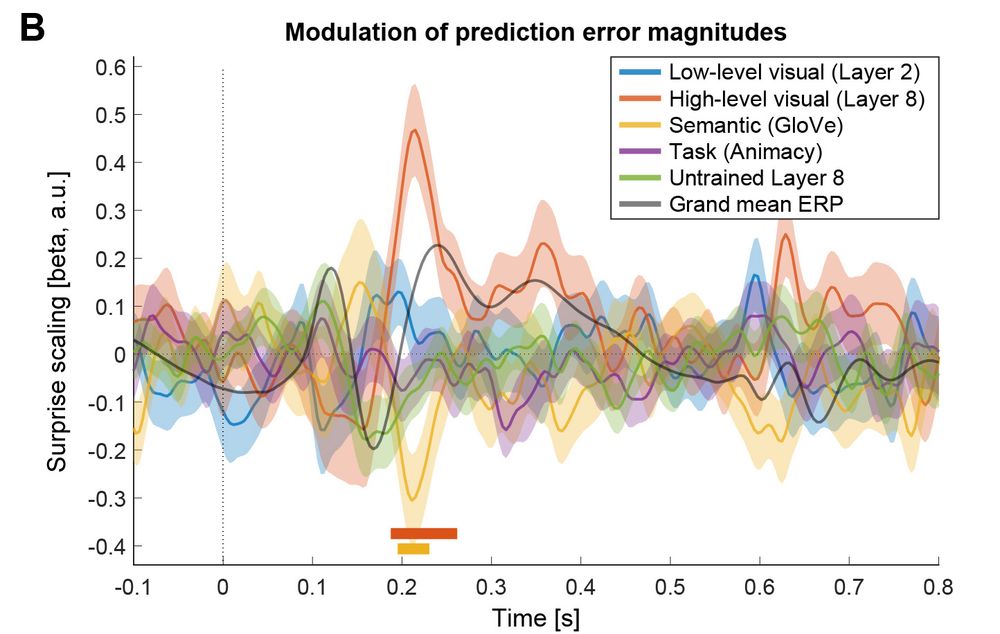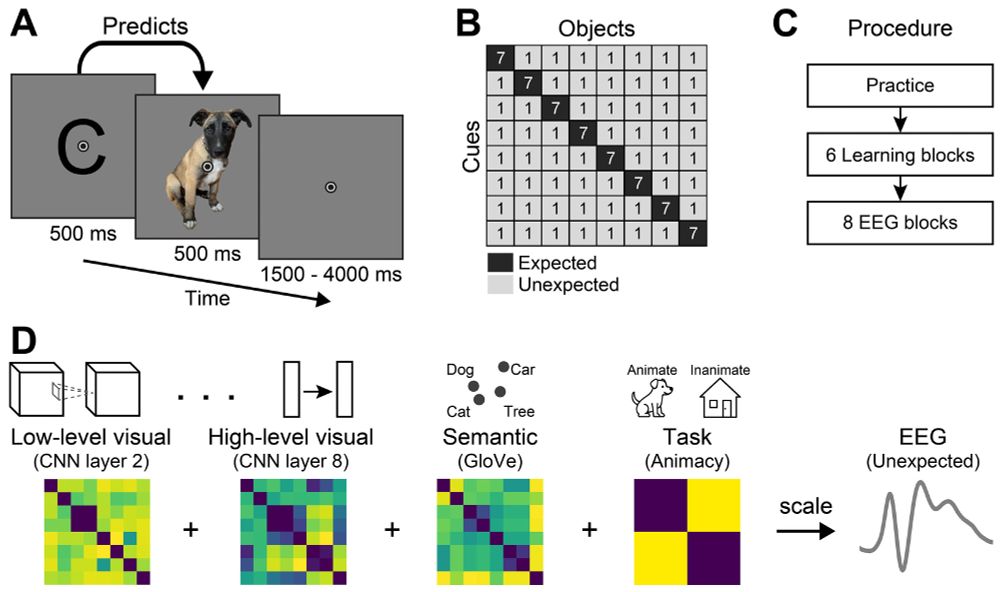
David Richter
@davidrichter.bsky.social
Cognitive Neuroscientist | Predictive Processing & Perception Researcher.
At: CIMCYC, Granada. Formerly: VU Amsterdam & Donders Institute.
https://www.richter-neuroscience.com/
At: CIMCYC, Granada. Formerly: VU Amsterdam & Donders Institute.
https://www.richter-neuroscience.com/
If you are interested in more details check out the preprint here:
www.biorxiv.org/content/10.1...
www.biorxiv.org/content/10.1...

Rapid Computation of High-Level Visual Surprise
Predictive processing theories propose that the brain continuously generates expectations about incoming sensory information. Discrepancies between these predictions and actual inputs, sensory predict...
www.biorxiv.org
June 26, 2025 at 10:22 AM
If you are interested in more details check out the preprint here:
www.biorxiv.org/content/10.1...
www.biorxiv.org/content/10.1...
Taken together, our findings demonstrate that high-level visual predictions are rapidly integrated during perceptual inference. This suggests that the brain's predictive machinery is finely tuned to utilize expectations abstracted away from low-level sensory details, likely to facilitate perception.
June 26, 2025 at 10:22 AM
Taken together, our findings demonstrate that high-level visual predictions are rapidly integrated during perceptual inference. This suggests that the brain's predictive machinery is finely tuned to utilize expectations abstracted away from low-level sensory details, likely to facilitate perception.
We also found a curious decrease in ERP amplitude by semantic (word-based) surprise. Critically, we found no modulation by low-level visual surprise, even though stimuli were predictable all the way down to the pixel level.
June 26, 2025 at 10:22 AM
We also found a curious decrease in ERP amplitude by semantic (word-based) surprise. Critically, we found no modulation by low-level visual surprise, even though stimuli were predictable all the way down to the pixel level.
Next, we turned to the key questions – when and what kind of surprise drive visually evoked responses? Results showed that neural responses around 200ms post-stimulus onset over parieto-occipital electrodes were selectively enhanced by high-level visual surprise.

June 26, 2025 at 10:22 AM
Next, we turned to the key questions – when and what kind of surprise drive visually evoked responses? Results showed that neural responses around 200ms post-stimulus onset over parieto-occipital electrodes were selectively enhanced by high-level visual surprise.
First, as a sanity check, we used RSA to show that the DNN and other models of interest (a semantic word-based and a task model) well explained the EEG response irrespective of surprise.

June 26, 2025 at 10:22 AM
First, as a sanity check, we used RSA to show that the DNN and other models of interest (a semantic word-based and a task model) well explained the EEG response irrespective of surprise.
We investigated these questions using EEG and a visual DNN. Participants viewed object images that were probabilistically predicted by preceding cues. We then quantified trial-by-trial surprise at low-levels (early DNN layers) and high-levels (late DNN layers) of visual feature abstraction.

June 26, 2025 at 10:22 AM
We investigated these questions using EEG and a visual DNN. Participants viewed object images that were probabilistically predicted by preceding cues. We then quantified trial-by-trial surprise at low-levels (early DNN layers) and high-levels (late DNN layers) of visual feature abstraction.
Predictive processing holds that the brain continuously generates predictions about incoming sensory information. But at what level of abstraction does the brain predict – edges & contrasts or high-level textures & objects? And which stages of visual processing do such predictions modulate?
June 26, 2025 at 10:22 AM
Predictive processing holds that the brain continuously generates predictions about incoming sensory information. But at what level of abstraction does the brain predict – edges & contrasts or high-level textures & objects? And which stages of visual processing do such predictions modulate?

